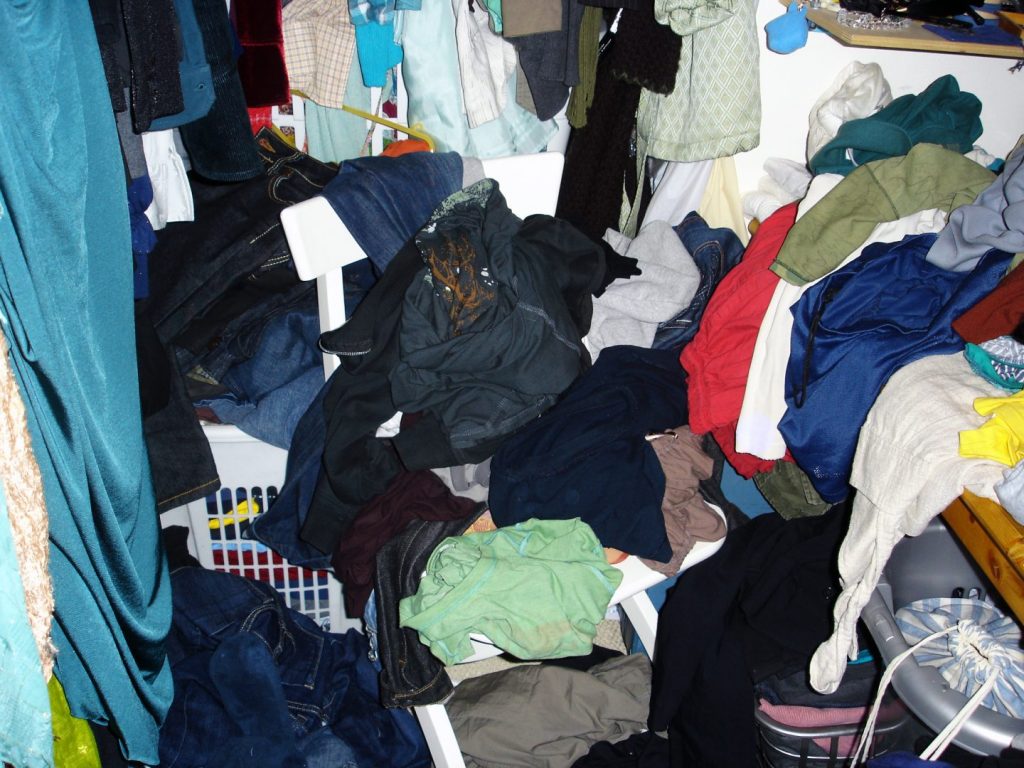
When we just have too much stuff, and organized poorly at that, to really know what we have, how to find it or use it, and it have it compete with us for our valuable living space
Clutter and too much stuff is not a topic that people like to discuss or even think about. Most of us deal with it, but very few of us want to mention or consider it.
On the whole, clutter is not safe or comfortable to have in our homes, for anyone – us, our family, friends, or our clients and potential clients. Not only does it create visual distractions and navigation issues in a home, it’s hard to find items that are stored randomly here-and-there.
So, manufacturers have come up with and made available to us – through numerous retail and online sources – various storage systems, including bins, bags, boxes, and other containers in a variety of sizes, capacities, and colors. Cabinets also come with bins, drawers, baskets, trays, and other ways to hold all of the household items and personal keepsakes we hold onto in our lifetimes.
Foodstuffs that we bring home from the store while we are waiting to prepare and use them, clothing that we purchase (often on sale) before we figure out where to keep it (or if we are going to eventually wear it or return it), cleaning supplies (including paper towels and rags) that are in transition from one location in the home to another, furniture that we are trying out in a new location (plus furniture that is being removed from a previous location that hasn’t made it to its new home yet), items that probably should be discarded because they have been replaced by something newer or more efficient, items that we have tired of using, and many other items find their way into cabinets, closets, staircases, hallways, and other locations where they often just accumulate. Items that we buy in bulk, in quantities larger than we probably need or will ever use, easily are available and tempting through their per item pricing form warehouse clubs and online shopping sites.
All that said, just picking up items (even laundry, outerwear, and other items that we are going to use again rather quickly) and putting them elsewhere in the home – such as in bins, baskets, in drawers, in closets, or on shelves – may just be moving them around and exchanging or relocating clutter or excess in one area of the home to another.
Just keep in mind, are we just moving about or rearranging clutter or storage to clear up one area in the home (a hallway, stairwell, or countertop, for instance) and move it to another? One area gets cleaned, and another becomes the recipient of what was stored elsewhere. Thus, we are just relocating the issue rather than solving, dealing with, or eliminating it.
There is nothing wrong with bins, baskets, shelves, and other places to place and retain various items that we want to hold onto or that we think will be used at some time in the future. The challenge is to keep only a reasonable number of them and not allow them to become so abundant that we almost dread opening our cabinets and closets for what we will find stuffed into them. Then we also run the risk of holding onto so much stuff that we aren’t sure where to even look for those items that we think we have someplace but aren’t sure where they are.
What may also happen is that we take the loose, unorganized clutter and organize it into bins, boxes, and containers and then have that take up so much space that it begins to clutter our living environment the same or more than if we hadn’t attempted to organize it.
Clutter and excessive contents do not have to look a certain way in order for us to label them as being a distraction, a safety issue, or something that interferes with maneuvering through the home. They can be stacked in random piles, strewn about, placed here-and-there, piled neatly, or placed into storage containers. The issue is not so much how or where they are kept, in the long run, but that we retain more than we need to live successfully and effectively in our dwelling space.
We need to focus on decluttering but more in terms of the volume of stuff retained than in how it is stored or organized. The second aspect of this is the quality of what we retain. Do we really know what we have and could we ever find it again or use it if we ever needed to? We appreciate having our keepsakes and stuff around us – it is comforting. But just how much do we need, and at what cost in terms of possibly squeezing us out of our homes of taking up valuable floor space in out homes?
Aging in place is difficult enough for many people to working with, and they don’t need their lives complicated by having too much stuff in their homes, yet this is precisely what so many people are facing. We can help them to have a more comfortable lifestyle.
